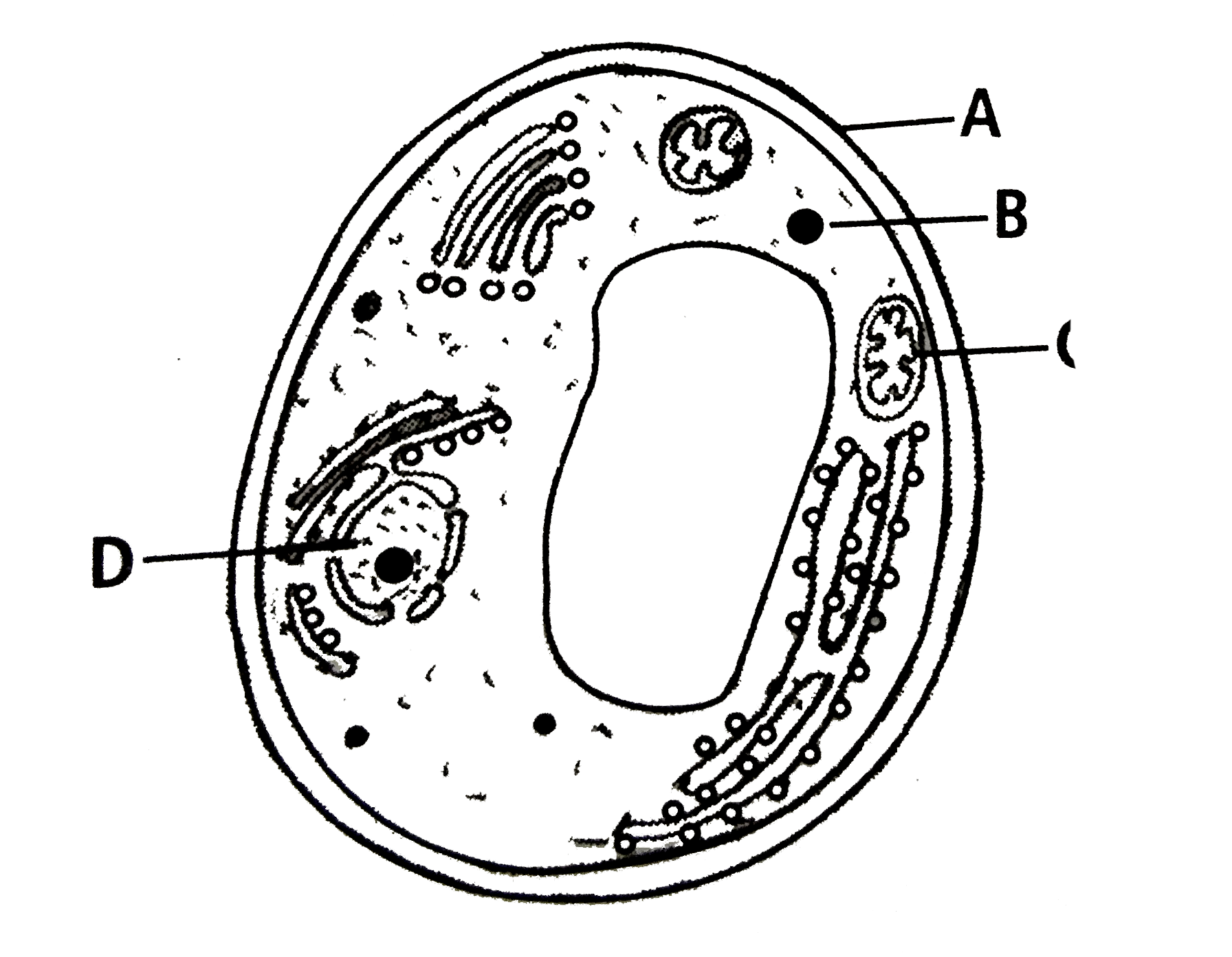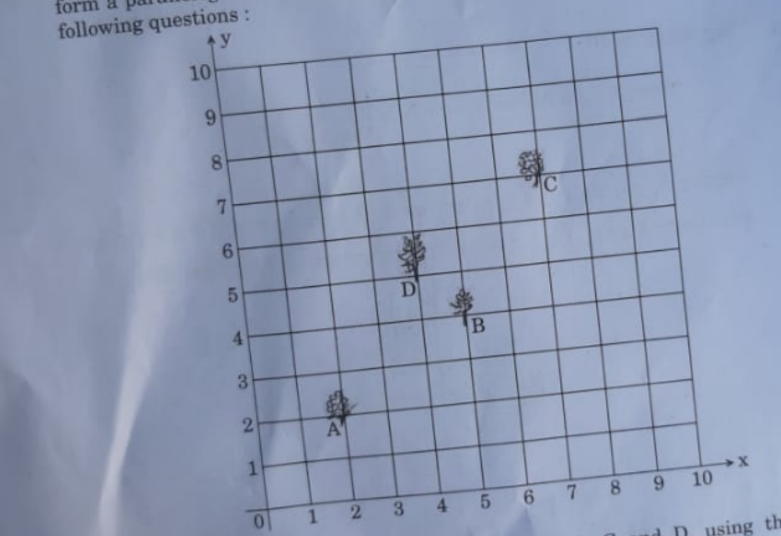A compound microscope forms an inverted image of an object. In which of the following cases it is likely to create difficulties? a. Looking at small germs. b.Looking at circular spots. c. Looking at a vertical tube containing some water.
To solve the question regarding the difficulties faced when using a compound microscope to view different objects, we will analyze each option step by step.
Step 1: Understanding the Inverted Image Formation
A compound microscope creates an inverted image of the object being viewed. This means that the orientation of the image is flipped upside down compared to the actual object.
Step 2: Analyzing Option A - Looking at Small Germs
- Small germs typically have symmetrical shapes.
- When viewed through a compound microscope, even though the image is inverted, the symmetrical nature of the germs means they will still appear similar in shape, making it easy to identify them.
- Conclusion: No significant difficulty arises when looking at small germs.
Step 3: Analyzing Option B - Looking at Circular Spots
- Circular spots, when viewed through a microscope, will also appear inverted.
- The circular shape remains unchanged in terms of its appearance; it will still look like a circle, just inverted.
- Conclusion: There is no significant difficulty when looking at circular spots.
Step 4: Analyzing Option C - Looking at a Vertical Tube Containing Water
- A vertical tube with water will show a meniscus (curvature of the water surface) when viewed through the microscope.
- The actual meniscus is a lower meniscus (concave), but when inverted, it appears as an upper meniscus (convex).
- This inversion can lead to confusion, especially when taking measurements or readings, as the appearance of the water level will not match the actual level.
- Conclusion: This scenario is likely to create difficulties due to the confusion caused by the inverted meniscus.
Final Answer
The option that is likely to create difficulties when using a compound microscope is C. Looking at a vertical tube containing some water.
---
A compound microscope creates an inverted image of the object being viewed. This means that the orientation of the image is flipped upside down compared to the actual object.
- Small germs typically have symmetrical shapes.
- When viewed through a compound microscope, even though the image is inverted, the symmetrical nature of the germs means they will still appear similar in shape, making it easy to identify them.
- Conclusion: No significant difficulty arises when looking at small germs.
- Circular spots, when viewed through a microscope, will also appear inverted.
- The circular shape remains unchanged in terms of its appearance; it will still look like a circle, just inverted.
- Conclusion: There is no significant difficulty when looking at circular spots.
- A vertical tube with water will show a meniscus (curvature of the water surface) when viewed through the microscope.
- The actual meniscus is a lower meniscus (concave), but when inverted, it appears as an upper meniscus (convex).
- This inversion can lead to confusion, especially when taking measurements or readings, as the appearance of the water level will not match the actual level.
- Conclusion: This scenario is likely to create difficulties due to the confusion caused by the inverted meniscus.
The option that is likely to create difficulties when using a compound microscope is C. Looking at a vertical tube containing some water.
Topper's Solved these Questions
- OPTICAL INSTRUMENTSBOOK - HC VERMA ENGLISHCHAPTER - OPTICAL INSTRUMENTSEXERCISE - Exercises
23 Videos
- MAGNETIC PROPERTIES OF MATTERBOOK - HC VERMA ENGLISHCHAPTER - MAGNETIC PROPERTIES OF MATTEREXERCISE - Short Answer
6 Videos
- PERMANENT MAGNETSBOOK - HC VERMA ENGLISHCHAPTER - PERMANENT MAGNETSEXERCISE - Short Answer
11 Videos
Similar Questions
In which of the following the final image is erect? A) simple microscope B) compound microscope C) Astronomical telescope D) Galilean telescope
View SolutionA vertical glass capillary tube, open at both ends, contains some water. Which of the following shapes may not be taken by the water -in the tube?
View Solution
Knowledge Check
A dental hygiene company is creating a new 24-ounce tube of toothpaste by combining its most popular toothpastes, Cavity Crusher and Bad Breadth Obliterator. Cavity Crusher contains 0.25% of sodium fluoride as its active ingredient,and Bad Breath Obliterator contains 0.30 % of triclosan as its active ingredient for a total of 0.069 ounces of active ingredients in both toothpastes. Solving which of the following systems of equations yields the number of ounces of Cavity Crusher,c, and the number of ounces of Bad Breath Obliterator ,b, that are in the new toothpaste?
Ac+b=0.069
0.25c+0.3b=24Bc+b=24
0.0025c+0.003b=0.0069Cc+b=24
0.025c+0.03b=0.069Dc+b=24
0.25c+0.3b=0.069The diagram shows the structure of a fungal cell with different parts labelled as A,B,C and D. Which of the following statements are true with regard to the fungal cell structive?

(i) A contains mucopolysaccharides which are also present in exoskeleton of insects and crustaceans.
(ii) D are usually more than one in number in case of aseptate hyphae.
(iii) Carotenes and xanthophylls are present in C, which harvest light energy for photosynthesis.
(iv) B is the reverse food material, usually stored in the form of starch and oil.Ai and iiBiii and ivCi,ii and ivDii,iii and iv
Which of the following letters of the English alphabet look the same as before when reflected across a vertical mirror line ? A,C,E,M,S,T,U,W,H.
View SolutionLook at the figures A, B and C carefully and answer the questions which follow:

Name two kinds of blood cells shown in A
View SolutionState the following statements as TRUE or FALSE.
a. A convex mirror cannot from a real image for a real object.
b. The image formed by a convex mirror is always diminished and erect.
c. Virtual image formed by a concave mirror is always enlarged.
d. Only in the case of a concave mirror, it may happen that the object and its image move in same direction.
e. In the case of a concave mirror, the image always move faster than the object.
f. If an object is placed in front of a diverging mirror at a distance equal to its focal length, then the height of image formed is half of the height of object.
g. For two positions of an object , a concave mirror can form englarged image.
h. Concave mirror is used as a rear view mirror in motor vehicles.
i. If some portion of the mirror ois covered, then complete image will be formed but of reduced brightness.
j. A plane mirror always forms an erect iamge of same size as that of the object.
k. The image formed by a plane mirror has left-right reversal.
l. A virtual object means a converging beam.
View SolutionChoose the following statement a True of False.
a. The real image formed by a lens is always inverted.
b. The image formed by a lens is always inverted.
c. The image formed by a concave lens is always erect and diminished.
d. An air bubble inside water acts like a concave lens.
e. The distance between a real object and its real image formed by a single lens cannot be more than 4f.
f. I an object is moved at a constant speed toward a convex lens from infinity to focus, then its image moves slower in the begninning and faster later on, away from the lens.
g. The focal length of a glass (μ=1.5) lens is 10 cm in air. When it is completely immersed in water its focal length will become 40cm.
View SolutionThree beakers labelled as A, B and C each containing 25 mL of water were taken. A small amount of NaOH, anhydrous CuSO4 and NaCl were added to the beakers A, B and C respectively. It was observed that there was an increase in the temperature of the solutions contained in beakers A and B, whereas in case of beaker C, the temperature of the solution falls. Which one of the followig statement (s) is (are) correct?
1. In beakers A and B, exothermic process has occurred.
2. In beakers A and B, endothermic process has occurred.
3. In beaker C, exothermic process has occurred.
4. In beaker C, endothermic process has occurred.
View SolutionKrishna has an apple orchard which has a 10m×10m sized kitchen garden attached to it. she divides it into a 10×10 grid and puts soil and manure into it. she grows a lemon plant at A, a coriander plant at B, an onion plant at C and a tomato plant at D. Her husband Ram praised her kitchen garden and points out that on joining A,B,C and D they may form a parallelogram. look at the below figure carefully and answer the following questions: (i) write the coordinates of the points A,B,C and D using the 10×10 grid as coordinate axes. (ii) find whether ABCD is a parallelogram or not.

View Solution
